Category: Recommended Reading
The Enduring Power of the Charlatan
Claus Leggewie at the LARB:
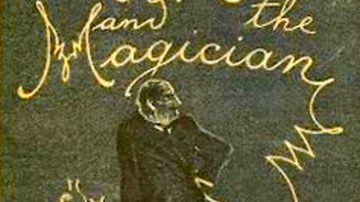 De Francesco’s book is a fascinating historical examination of the charlatan figure that remains valid. Drawing on a variety of historical sources, de Francesco traces this path through early modern Europe, dwelling on alchemists, worm doctors, magnetizers, prestidigitators, and mountebanks. Individuals making an appearance include long-forgotten gold-makers like Leopold Thurneißer and Marco Bragadino, purported revenants like the Count of St. Germain, self-styled healers like Doctor Eisenbarth and James Graham, magicians like Jacob Philadelphia, and occultists like the Count Alessandro di Cagliostro. De Francesco, who sometimes comes across like a phenomenological sociologist in the tradition of Walter Benjamin or Siegfried Kracauer rather than an art historian, manages to distill the traits and behaviors of all these historical figures to an archetype.
De Francesco’s book is a fascinating historical examination of the charlatan figure that remains valid. Drawing on a variety of historical sources, de Francesco traces this path through early modern Europe, dwelling on alchemists, worm doctors, magnetizers, prestidigitators, and mountebanks. Individuals making an appearance include long-forgotten gold-makers like Leopold Thurneißer and Marco Bragadino, purported revenants like the Count of St. Germain, self-styled healers like Doctor Eisenbarth and James Graham, magicians like Jacob Philadelphia, and occultists like the Count Alessandro di Cagliostro. De Francesco, who sometimes comes across like a phenomenological sociologist in the tradition of Walter Benjamin or Siegfried Kracauer rather than an art historian, manages to distill the traits and behaviors of all these historical figures to an archetype.
more here.
Our Country Friends
Keith Miller at Literary Review:
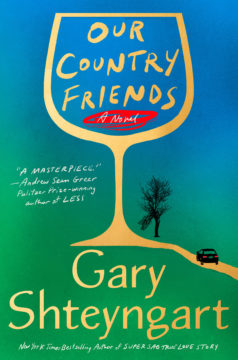 Gary Shteyngart has quietly become one of the most talented comic writers working in English today. More or less uniquely, apart maybe from bits of Zadie Smith, he’s even funny on the subject of identity. He’s also good on both Tom Wolfe’s ‘right – BAM! – now’ and J G Ballard’s ‘next five minutes’, having trained his lens on the brutal carnival of post-Soviet Russia in Absurdistan, the impact of tech on the mating habits of youngish Americans in Super Sad True Love Story and the fallout of the financial crisis of 2008 in Lake Success. If all that were not enough, he’s an unusually acute observer of a certain strain of male sexual anguish that some of his predecessors might have treated with an indulgence bordering on mysticism, but which most of his contemporaries now seem to view as little more than an abstract social problem or a handy plot device.
Gary Shteyngart has quietly become one of the most talented comic writers working in English today. More or less uniquely, apart maybe from bits of Zadie Smith, he’s even funny on the subject of identity. He’s also good on both Tom Wolfe’s ‘right – BAM! – now’ and J G Ballard’s ‘next five minutes’, having trained his lens on the brutal carnival of post-Soviet Russia in Absurdistan, the impact of tech on the mating habits of youngish Americans in Super Sad True Love Story and the fallout of the financial crisis of 2008 in Lake Success. If all that were not enough, he’s an unusually acute observer of a certain strain of male sexual anguish that some of his predecessors might have treated with an indulgence bordering on mysticism, but which most of his contemporaries now seem to view as little more than an abstract social problem or a handy plot device.
more here.
Tuesday Poem
A Brief History of Hostility
In the beginning
there was the war.
The war said let there be war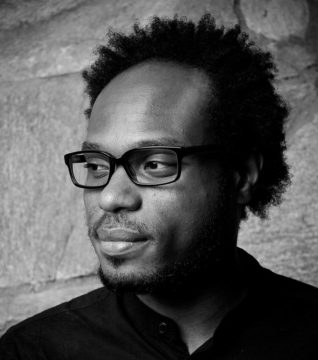
and there was war.
The war said let there be peace
and there was war.
The people said music and rain
evaporating against fire in the brush
was a kind of music
and so was the beast.
The beast that roared
or bleated when brought down
was silent when skinned
but loud after the skin
was pulled taut over wood
and the people said music
and the thump thump
thump said drum.
Someone said
war drum. The drum said war
is coming to meet you in the field.
The field said war
tastes like copper,
said give us some more, said look
at the wild flowers our war plants
in a grove and grows
just for us.
An ancient link between heart and head — as seen in the blobby, headless sea squirt
Amy Maxmen in Nature:
The head is stately, calm, and wise,
And bears a princely part;
And down below in secret lies
The warm, impulsive heart.
— John Godfrey Saxe, 1898
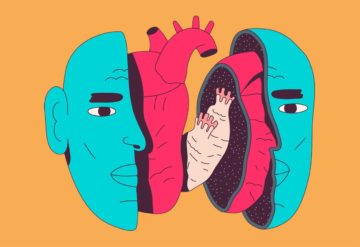 For centuries, writers have mused on the heart as the core of humanity’s passion, its morals, its valour. The head, by contrast, was the seat of cold, hard rationality. In 1898, US poet John Godfrey Saxe wrote of such differences, but concluded his verses arguing that the heart and head are interdependent. “Each is best when both unite,” he wrote. “What were the heat without the light?” At that time, however, Saxe could not have known that the head and the heart share a deep biological connection.
For centuries, writers have mused on the heart as the core of humanity’s passion, its morals, its valour. The head, by contrast, was the seat of cold, hard rationality. In 1898, US poet John Godfrey Saxe wrote of such differences, but concluded his verses arguing that the heart and head are interdependent. “Each is best when both unite,” he wrote. “What were the heat without the light?” At that time, however, Saxe could not have known that the head and the heart share a deep biological connection.
In the past 15 years, scientists have uncovered a developmental link between the two. In 2010, for example, researchers revealed that the same small pool of cells that divides and differentiates to form the heart in mouse embryos also gives way to muscles in their throats and lower heads1. Key components of the two are cut from the same cloth.
Even more surprising is that the embryonic head–heart connection pre-dates the evolutionary origin of vertebrates, and perhaps even of the head itself. Researchers stumbled on the link while studying sea squirts, blobby, sedentary marine creatures, found affixed to the sea floor, that have two openings — one for sucking water in and the other for squirting it out — hence the name.
More here.
What Made Black History in 2021?
Dodai Stewart in The New York Times:
 On a Wednesday morning in January, Kamala Harris became the first Black woman — and the first woman of color — sworn into the office of Vice President of the United States.
On a Wednesday morning in January, Kamala Harris became the first Black woman — and the first woman of color — sworn into the office of Vice President of the United States.
During the inauguration ceremony, Amanda Gorman, a Black writer and, at 22, the youngest inaugural poet in U.S. history, recited “The Hill We Climb.” The New York Times critic Dwight Garner wrote that Ms. Gorman “offered a fortifying tablespoon of American plain-spokenness. She offered lucidity and euphony.”
It was Black history in the making, televised to millions — and a hint at what was to come in the new year. 2021 was always destined to be viewed through the lens of the year that came before, and 2020 was a milestone in Black history. Following the death of George Floyd under the knee of a police officer, the summer of 2020 churned with turmoil. Americans took to the streets in what was estimated to be the largest movement in U.S. history. There were demonstrations, confrontations, protests and declarations; over and over, we heard the phrase “Black lives matter.”
More here. (Note: At least one post throughout the month of February will be devoted to Black History Month. The theme for 2022 is Black Health and Wellness)
Sunday, February 13, 2022
Plagiarism, Technology, and the Dead-End of the Humanities
Justin E. H. Smith in his Substack newsletter, The Hinternet:
 My friend Agnes Callard stirred up some mischief a while back by writing at least somewhat sympathetically of the deeds of plagiarists, including her own past self in elementary school. “Academia,” she observed, “has confused a convention with a moral rule, and this confusion is not unmotivated.”
My friend Agnes Callard stirred up some mischief a while back by writing at least somewhat sympathetically of the deeds of plagiarists, including her own past self in elementary school. “Academia,” she observed, “has confused a convention with a moral rule, and this confusion is not unmotivated.”
In order to count as plagiarism, I take it, a piece of written work must be falsely presented as if written by its presenter, when in fact it was written by someone else. So defined, I suppose I am in most circumstances “opposed to plagiarism,” roughly in the same degree and with the same intensity as Agnes. Though much like her as well, rather than simply taking a stand on the issue —as if that’s what an intellectual were supposed to do—, I am much more interested in figuring out the historical and technological circumstances in which this gesture came to be something like the literary and academic equivalent of murder, the absolute unspeakable act that can only eventuate in total exclusion from the ecumene, this even at a time when information-processing technologies are, like it or not, largely obviating the need for a well-rounded, generally competent person to develop the skill of long-form textual composition at all.
More here.
Computer Scientists Prove Why Bigger Neural Networks Do Better
Mordechai Rorvig in Quanta:
 Our species owes a lot to opposable thumbs. But if evolution had given us extra thumbs, things probably wouldn’t have improved much. One thumb per hand is enough.
Our species owes a lot to opposable thumbs. But if evolution had given us extra thumbs, things probably wouldn’t have improved much. One thumb per hand is enough.
Not so for neural networks, the leading artificial intelligence systems for performing humanlike tasks. As they’ve gotten bigger, they have come to grasp more. This has been a surprise to onlookers. Fundamental mathematical results had suggested that networks should only need to be so big, but modern neural networks are commonly scaled up far beyond that predicted requirement — a situation known as overparameterization.
In a paper presented in December at NeurIPS, a leading conference, Sébastien Bubeck of Microsoft Research and Mark Sellke of Stanford University provided a new explanation for the mystery behind scaling’s success.
More here.
The inevitability of Zooming while distracted
Alan Jacobs in The Hedgehog Review:
 Every medium of communication has its own attentional norms. Like all tacit rules that govern behavior, they get violated, but the violators typically act deliberately. For instance, the people who talk aloud in the movie theater typically aren’t ignorant of the norms; they transgress them for the lulz. Human beings are extremely skilled at recognizing and internalizing the norms of any given medium or environment.
Every medium of communication has its own attentional norms. Like all tacit rules that govern behavior, they get violated, but the violators typically act deliberately. For instance, the people who talk aloud in the movie theater typically aren’t ignorant of the norms; they transgress them for the lulz. Human beings are extremely skilled at recognizing and internalizing the norms of any given medium or environment.
Such norms are not set in stone but rather can alter over time. The strict decorum demanded of classical music audiences was codified in the early twentieth century, largely through the influence of Gustav Mahler. By contrast, Haydn and Mozart had to put up with noisy audiences, and indeed rarely began a symphonic piece quietly because if they had done so no one would have known that the music had started. Similarly, it was common in the Middle Ages for churchgoers to chat through most of Mass and even play cards, listening with one ear to the bells that would alert them when their attention was required. (Even the more overtly pious would often pray the rosary as the priest said the Mass, again relying on the bells as a notification system.) Still, despite changes that inevitably occur over the long term, at any given moment in time most people know what the attentional norms are for any social endeavor they participate in.
It has been interesting to watch over the last two pandemic years as the norms associated with videoconferencing have coalesced.
More here.
How Antarctic Explorers Kept Themselves Sane on the Voyage
Ranulph Fiennes in Literary Hub:
 The Royal Geographical Society encouraged the Royal Navy to support British expeditions of Antarctica in the early 1900s. Heading from New Zealand, the expedition ship Discovery anchored off the coastline of the unknown land under the leadership of Captain Robert Falcon Scott. He chose the Anglo-Irish ex-Merchant Navy Third Officer, Ernest Shackleton, to lead the first hazardous sledge journey inland over slippery surfaces at temperatures as low as minus 62 degrees Fahrenheit. They aimed to make history by breaking the furthest South record towards the bottom of planet Earth.
The Royal Geographical Society encouraged the Royal Navy to support British expeditions of Antarctica in the early 1900s. Heading from New Zealand, the expedition ship Discovery anchored off the coastline of the unknown land under the leadership of Captain Robert Falcon Scott. He chose the Anglo-Irish ex-Merchant Navy Third Officer, Ernest Shackleton, to lead the first hazardous sledge journey inland over slippery surfaces at temperatures as low as minus 62 degrees Fahrenheit. They aimed to make history by breaking the furthest South record towards the bottom of planet Earth.
Both men succeeded separately, over the next ten years in hellish conditions, to open the way to the South Pole. Scott became famous through the courageous manner of his death and Shackleton through his remarkable 18-month survival story, which ended when his ship, the Endurance, sank. He died in January 1922, 100 years ago, on another Antarctic voyage.
When cocooned in the darkness for months on end, many on Antarctic expeditions have lost their minds.
More here.
Sam Lay (1935 – 2022) drummer
Todd Gitlin (1943 – 2022) political thinker/activist
David Gordon (1936 – 2022) choreographer
Sunday Poem
Let America be America again
— by Langston Hughes
Let America be America again.
Let it be the dream it used to be.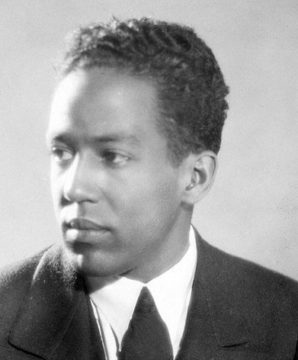
Let it be the pioneer on the plain
Seeking a home where he himself is free.
(America never was America to me.)
Let America be the dream the dreamers dreamed—
Let it be that great strong land of love
Where never kings connive nor tyrants scheme
That any man be crushed by one above.
(It never was America to me.)
O, let my land be a land where Liberty
Is crowned with no false patriotic wreath,
But opportunity is real, and life is free,
Equality is in the air we breathe.
(There’s never been equality for me,
Nor freedom in this “homeland of the free.”)
Say, who are you that mumbles in the dark?
And who are you that draws your veil across the stars?
I am the poor white, fooled and pushed apart,
I am the Negro bearing slavery’s scars.
I am the red man driven from the land,
I am the immigrant clutching the hope I seek—
And finding only the same old stupid plan
Of dog eat dog, of mighty crush the weak.
I am the young man, full of strength and hope,
Tangled in that ancient endless chain
Of profit, power, gain, of grab the land!
Of grab the gold! Of grab the ways of satisfying need!
Of work the men! Of take the pay!
Of owning everything for one’s own greed!
Dangerous, voyeuristic, transgressive, exciting: James Joyce’s Ulysses at 100
Anne Enright at The Guardian:
 When I was young, growing up in Dublin, Ulysses was considered the greatest novel in the world and the dirtiest book ever written. I bought a copy as soon as I had money and it was taken away from me when my mother discovered me reading it – though Lolita, for some reason, had passed unnoticed in our house. I was 14. I was outraged, and delighted with myself, and a little confused. Ulysses contained something worse than sex, clearly, and I did not know what that could be.
When I was young, growing up in Dublin, Ulysses was considered the greatest novel in the world and the dirtiest book ever written. I bought a copy as soon as I had money and it was taken away from me when my mother discovered me reading it – though Lolita, for some reason, had passed unnoticed in our house. I was 14. I was outraged, and delighted with myself, and a little confused. Ulysses contained something worse than sex, clearly, and I did not know what that could be.
“It is very scatological,” my mother said and then, “Look it up!” which is certainly one way to develop a daughter’s vocabulary, though the definition left me no further on. What could be so terrible – or so interesting – about going to the toilet? After much argument, I put the book up in the attic, to be taken down when I had come of age. Four years later, I retrieved it and read the thing all the way through, though I think I skipped some of the stuff in the brothel, which seemed to contain no actual information about brothels, or far too much information, none of which was real, and which managed all this at great length.
Clearly I was missing something. It was sometimes hard to tell if a character was doing a thing or only thinking about doing it and this constant sense of potential gave Joyceans a very peering look. Meanwhile, he was a very great genius, so discussions about what Joyce meant by one or another line were airy, pedantic, and so properly masculine I found it hard to join in. Reading Ulysses made a man very clever, clearly, and a woman not clever, but intriguingly dirty. For some of these intellectual types at least, there was something a little creepy in the way they said: “Fourteen?”
More here.
Toward a Usable Black History
John McWhorter in City Journal:
 You brought me here in CHAINS! You brought me here in CHAINS!” James Baldwin exclaimed to a white interviewer in the late 1960s, summing up the sense of our history that most blacks have. Yes, we pay lip service to our having “survived” in this country, but the image most resonant to us is being brought here packed in ships, treated like animals for 250 years, and pushed to the margins of society for the next 100. Many black thinkers downplay even the “survival,” depicting modern black America as a variation on slavery and dismissing the progress we’ve made since the 1960s by condemning successful blacks as “house niggers.” The result: for most of us, “black history” summons images of endless degradation—slavery, the quick demise of Reconstruction, Plessy v. Ferguson, the Klan, lynchings, the beatings of civil rights activists, Dred Scott, Emmett Till.
You brought me here in CHAINS! You brought me here in CHAINS!” James Baldwin exclaimed to a white interviewer in the late 1960s, summing up the sense of our history that most blacks have. Yes, we pay lip service to our having “survived” in this country, but the image most resonant to us is being brought here packed in ships, treated like animals for 250 years, and pushed to the margins of society for the next 100. Many black thinkers downplay even the “survival,” depicting modern black America as a variation on slavery and dismissing the progress we’ve made since the 1960s by condemning successful blacks as “house niggers.” The result: for most of us, “black history” summons images of endless degradation—slavery, the quick demise of Reconstruction, Plessy v. Ferguson, the Klan, lynchings, the beatings of civil rights activists, Dred Scott, Emmett Till.
Not to attend to such things would be folly; but a history only of horrors cannot inspire. What could be more demoralizing than Mba Mbulu’s Ten Lessons: An Introduction to Black History, for example, a chronicle mostly of slavery and segregation, with “White People’s Attacks on Other People” and “Back in Our Place” as typical chapter titles? Except for a little dollop of blacks’ contributions to what is called “White History,” the overall message is a grim saga of victimization. This kind of history is deeply damaging to blacks. When “Learn your history” means “Don’t get fooled by superficial changes,” today’s New York City Street Crimes Unit can’t be distinguished from yesterday’s Bull Connor, and our aggrieved despair over our sense of disinclusion from the national fabric remains as sharp as ever. Could any people find inner peace when taught to think of their own society as their enemy?
More here. (Note: At least one post throughout the month of February will be devoted to Black History Month. The theme for 2022 is Black Health and Wellness)
Saturday, February 12, 2022
What Has COVID Done to Our Romantic Relationships?
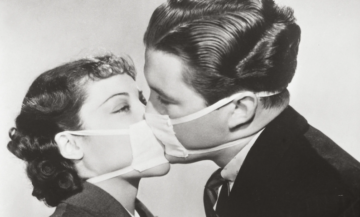 Laura Kipnis in LitHub:
Laura Kipnis in LitHub:
If you’re reading this you recently survived a massive worldwide extinction event, congratulations. Too many didn’t. Have a nice big helping of residual simmering rage (so great for the immune system!) at being abandoned by our “leaders,” at the profiteers and incompetents and liars, at a cleverly murderous microscopic entity that wants to exploit you as a host and strip your organs for parts. Along with the grief about everything that was lost. About everyone who was lost.
On another but not entirely unrelated subject, how’s your love life? No doubt living through an extended planetary contagion will be infecting our relation to other people’s bodies and droplets for years or decades to come. A deadly virus alters your sense of what gets transmitted between people and what threats they pose, probably long after the pathogen itself gets beaten down (and apparently we’re not getting back to “normal life” anytime soon).
But it’s not just viruses that mutate, so do we. Our emotions mutate, our relationships mutate. Maybe our ideas about love and what we need or can realistically give another person have mutated. We’re different than we were before, including at the cellular level. We’re cohabiting with something malevolent—for how long? Everything important is uncertain. How much that shifts the interpersonal calculus is another of the unknowns.
More here.
The Enduring Power of the Charlatan
 Claus Leggewie in The LA Review of Books:
Claus Leggewie in The LA Review of Books:
ON OCTOBER 16, 1937, a certain Grete de Francesco of Milan sent a 12-page, handwritten letter to the “esteemed Mr. Thomas Mann,” along with a copy of her recently published book Die Macht des Charlatans (The Power of the Charlatan). Though unknown to the world-famous author, de Francesco insisted that Mann was the “intellectual patron saint” behind her own work: “This book would never have been written,” she explained, “were it not for the wake-up call” provided in 1930 by his novella Mario and the Magician.
As his various underlinings show, Mann read the letter carefully, and he even complied with de Francesco’s request to recommend her study for review in a prominent journal. The book turned out to be even more successful in the United States when it was released by Yale University Press in 1939 (in a translation by Miriam Beard), and it eventually became well known among exiled writers and also in Hitler’s Germany, where officials recognized its explosive potential and promptly pulped as many copies as they could get hold of. Since then, de Francesco’s study was largely forgotten — until a brilliantly annotated reprint appeared from German publisher Die Andere Bibliothek in 2021.
More here.
Larry Fink’s Capitalist Shell Game
 Mariana Mazzucato in Project Syndicate:
Mariana Mazzucato in Project Syndicate:
BlackRock Chairman and CEO Larry Fink’s latest annual letter has taken the business world by storm. BlackRock is the world’s largest asset manager, and Fink, addressing the CEOs of the companies whose assets his firm manages on behalf of investors, took the opportunity to advocate a more ecologically sustainable, socially conscious, forward-looking form of capitalism rooted in stakeholder rather than shareholder value.
Fink’s exhortation seems like a welcome break from orthodox dogma. But if his vision is supposed to be “woke,” it is not nearly woke enough. We’ve heard all this before, including in Fink’s own 2018 and 2019 letters, and in the ballyhooed 2019 Business Roundtable statement that Fink helped spearhead. But far too little has changed, largely because the vision expressed by Fink and other corporate leaders stops short of the radical reforms needed to transform capitalism in the interests of people and the planet.
Fink’s version of stakeholder capitalism is based on conceptual sleight of hand. After all, his support for stakeholders is conditional on a secure profit pipeline for shareholders, which means that shareholder value remains the bottom line. Stakeholder value becomes merely a means to an end – to benefit shareholders in the long run. It is thus a betrayal of stakeholder capitalism’s true intent: to create value for public benefit.
More here.
Cavafy’s Homer
Daniel Mendelsohn at The Hudson Review:
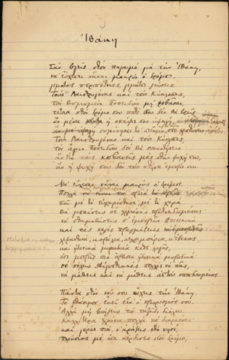 How did Constantine Cavafy get to “Ithaca”? Not the island, of course, but the 1911 poem that is Cavafy’s most famous and best-loved work, which begins by admonishing its nameless second-person addressee—who may be Homer’s Odysseus, but could also be us, the reader—to “hope that the road is a long one, / filled with adventures, filled with discoveries” as he “sets out on the way to Ithaca”: the hero’s island home, the all-important destination in the myths that Homer’s poems adapted, perhaps the most famous destination in world literature. Certainly “Ithaca” is the poet’s most famous and beloved work, at least in the anglophone world and particularly in America, where a reading of it at Jacqueline Kennedy Onassis’ funeral in 1994 briefly made Cavafy a bestseller.
How did Constantine Cavafy get to “Ithaca”? Not the island, of course, but the 1911 poem that is Cavafy’s most famous and best-loved work, which begins by admonishing its nameless second-person addressee—who may be Homer’s Odysseus, but could also be us, the reader—to “hope that the road is a long one, / filled with adventures, filled with discoveries” as he “sets out on the way to Ithaca”: the hero’s island home, the all-important destination in the myths that Homer’s poems adapted, perhaps the most famous destination in world literature. Certainly “Ithaca” is the poet’s most famous and beloved work, at least in the anglophone world and particularly in America, where a reading of it at Jacqueline Kennedy Onassis’ funeral in 1994 briefly made Cavafy a bestseller.
more here.
